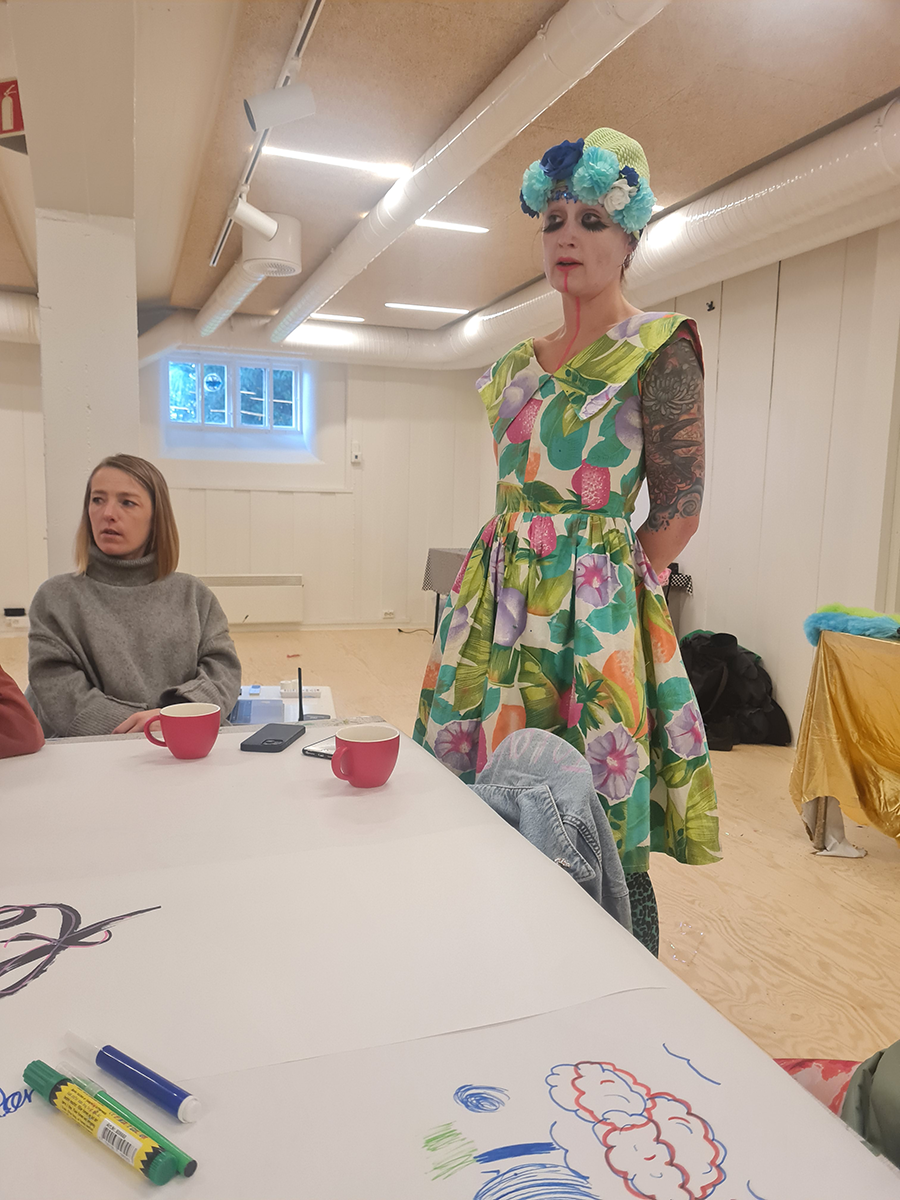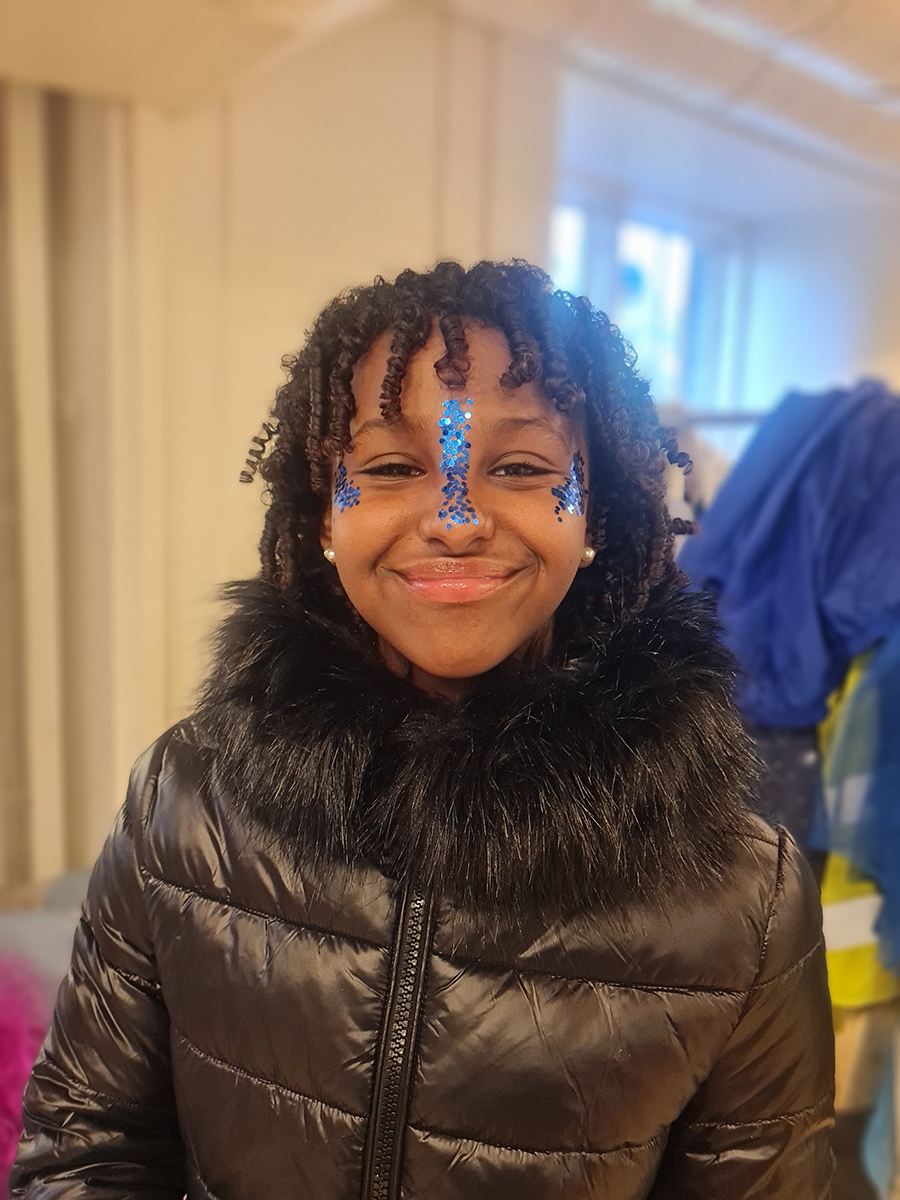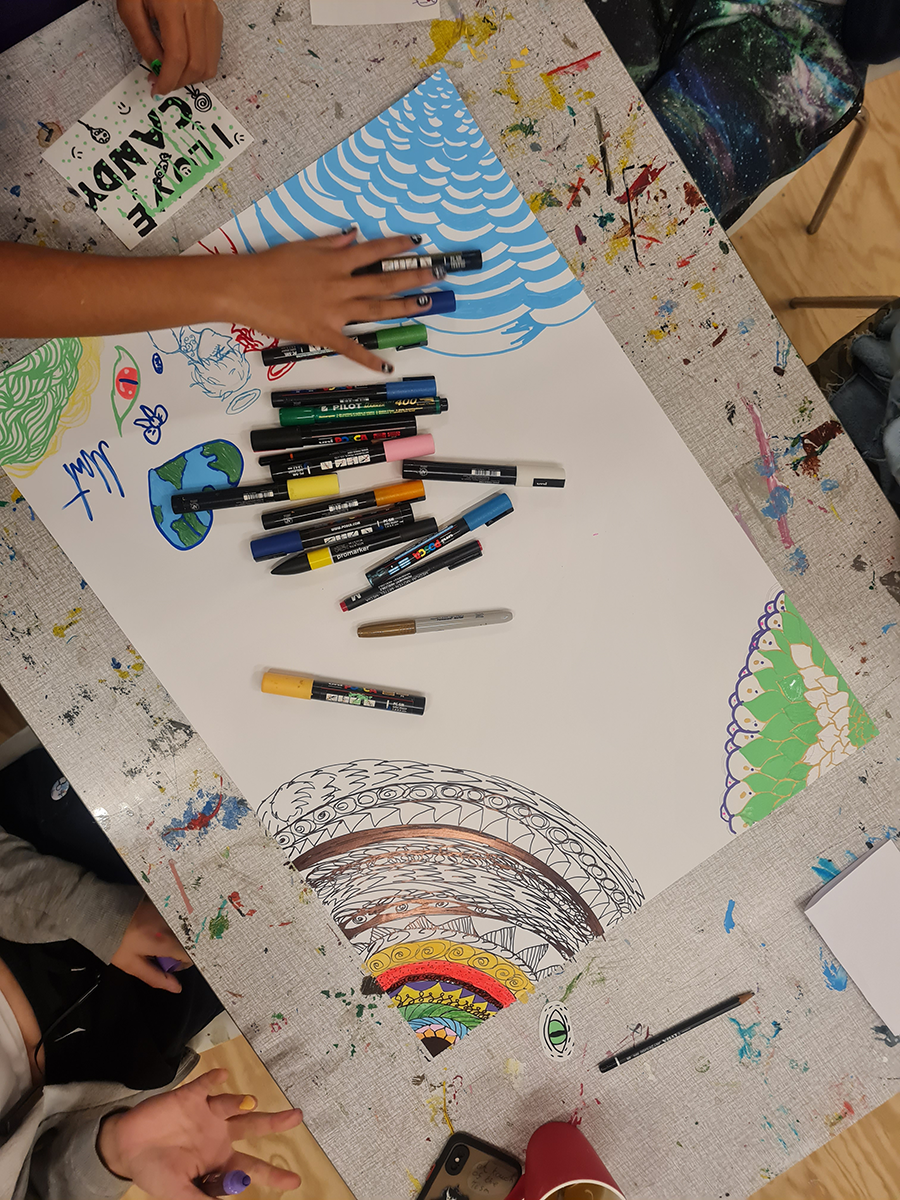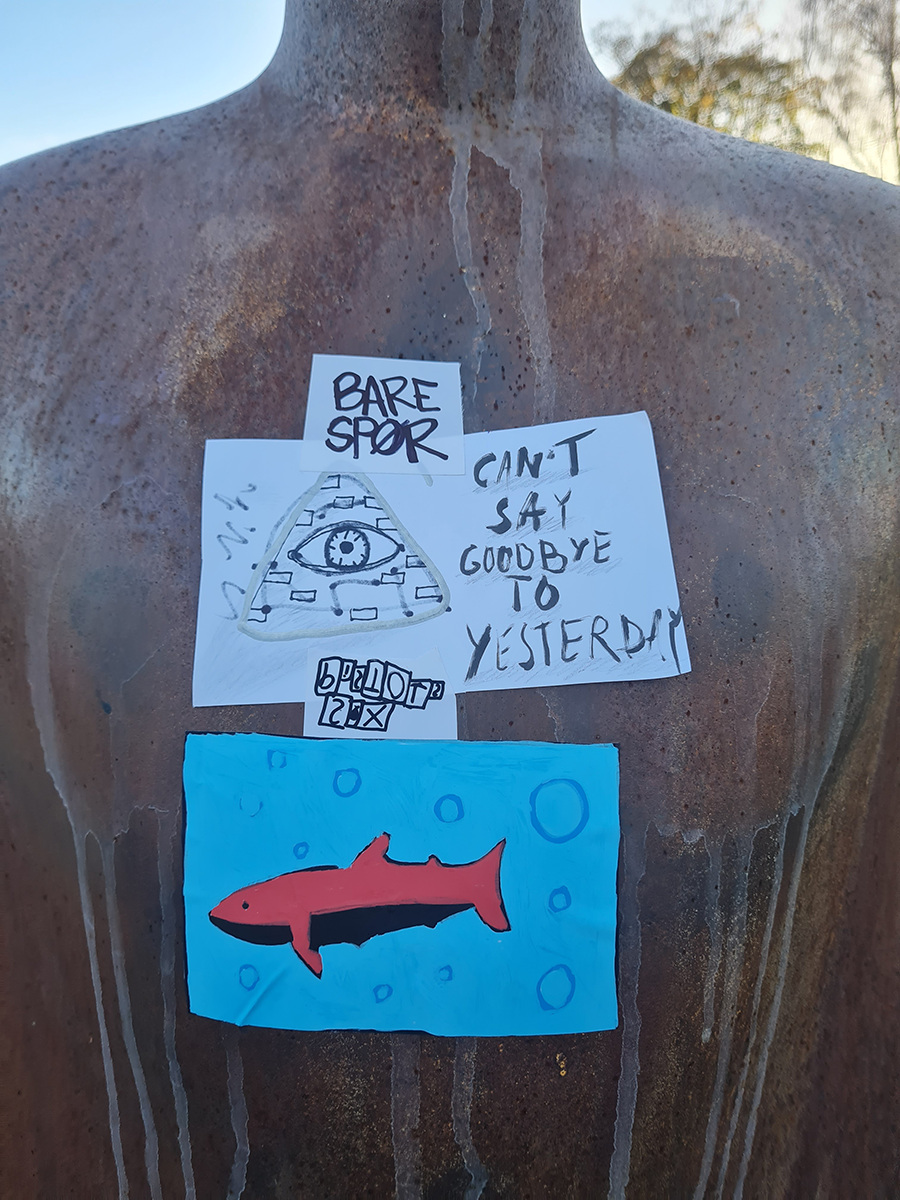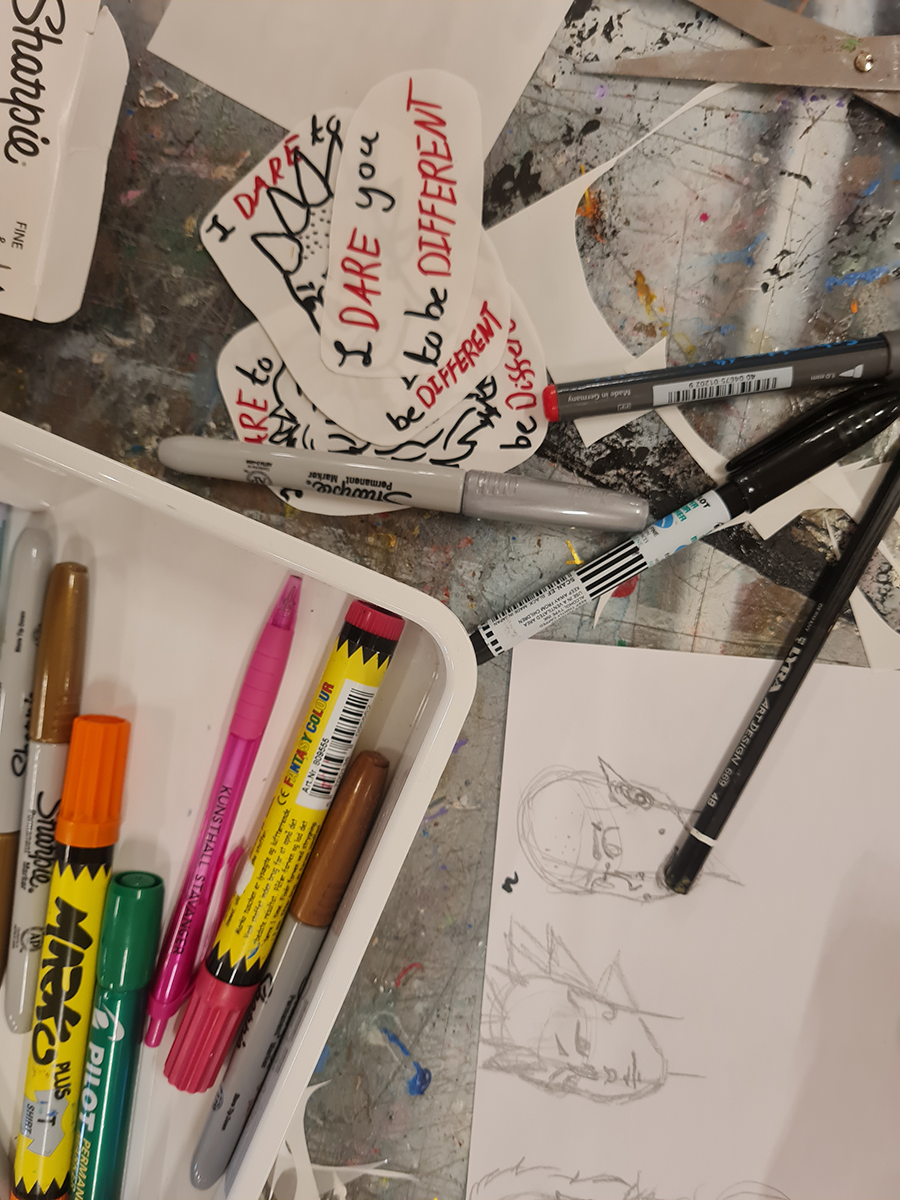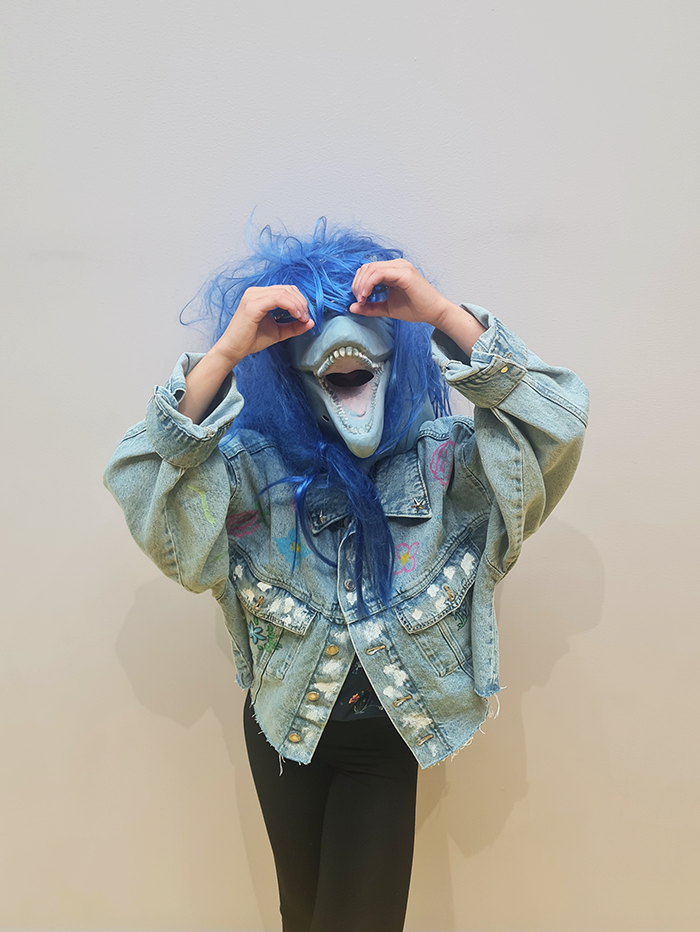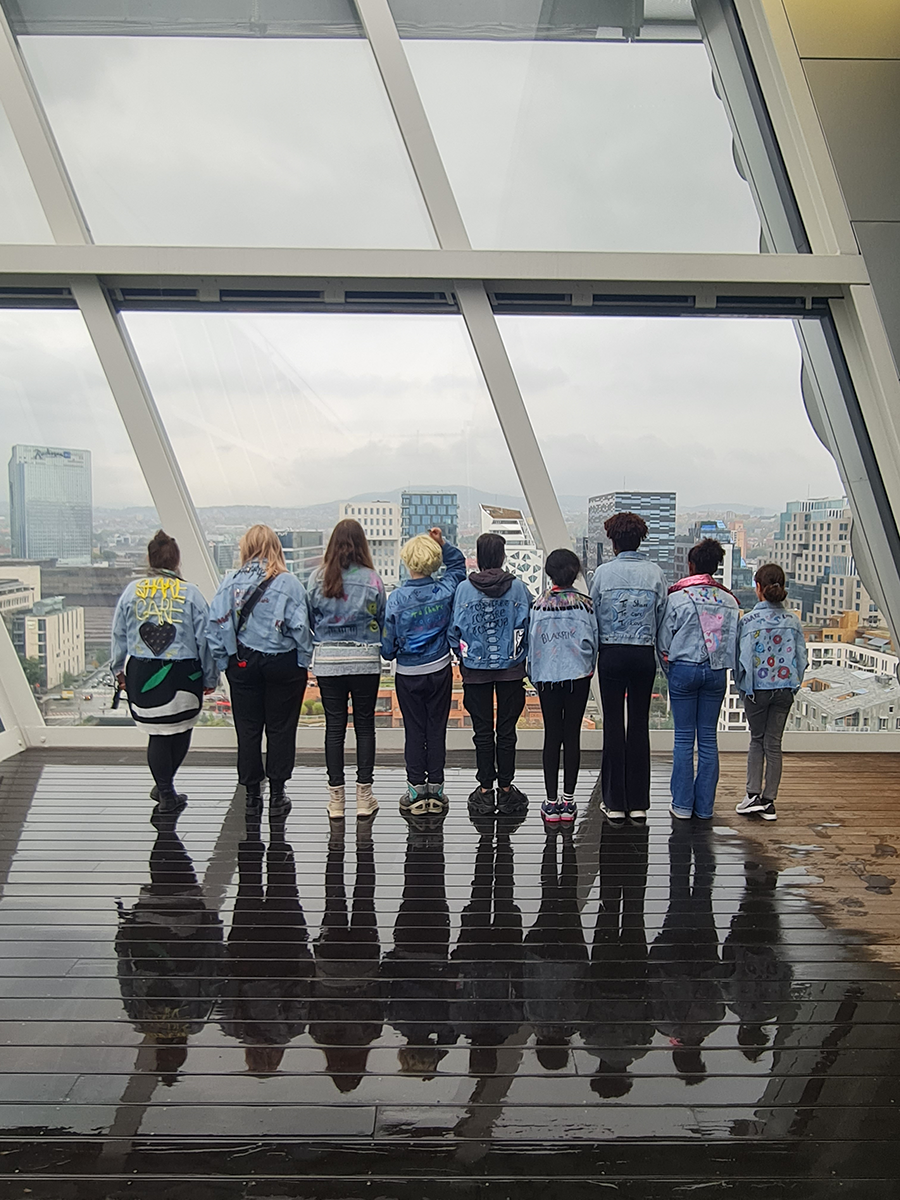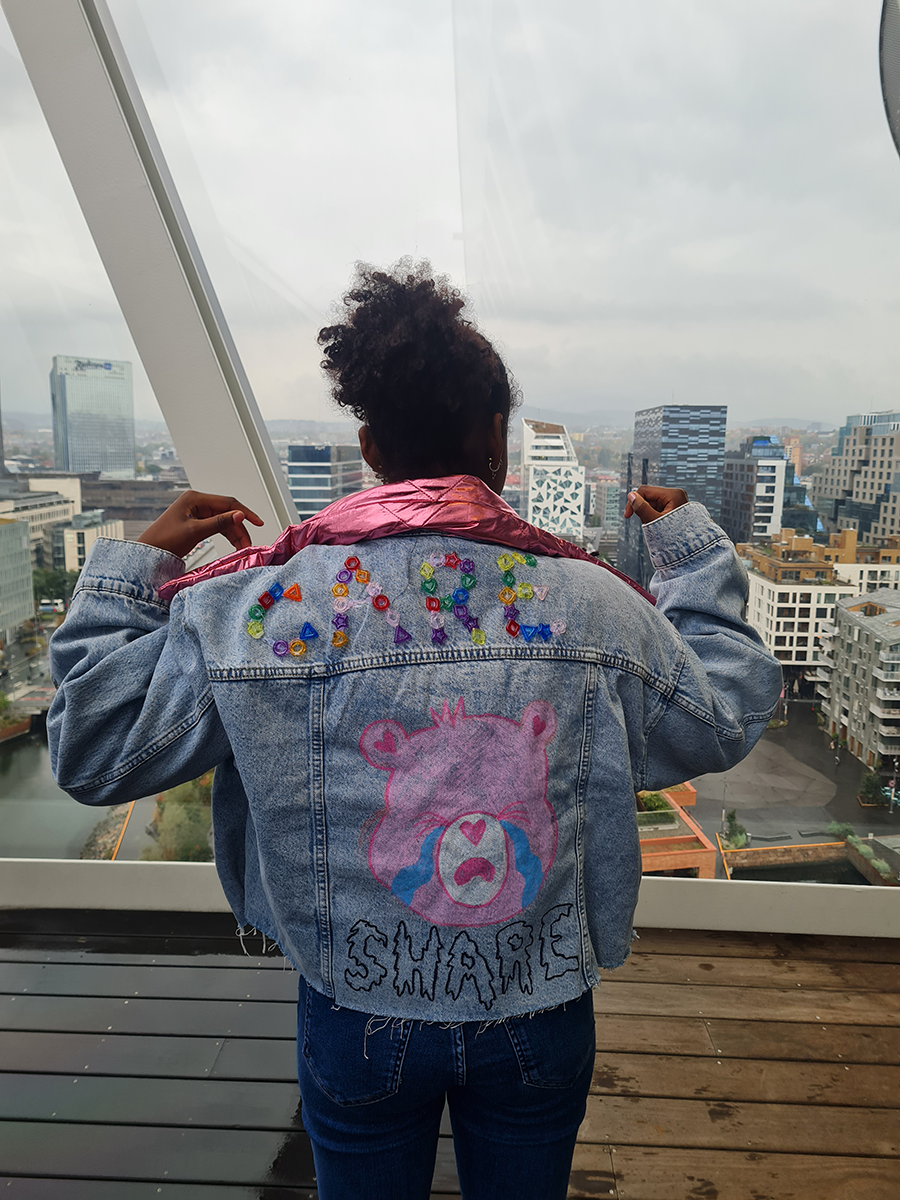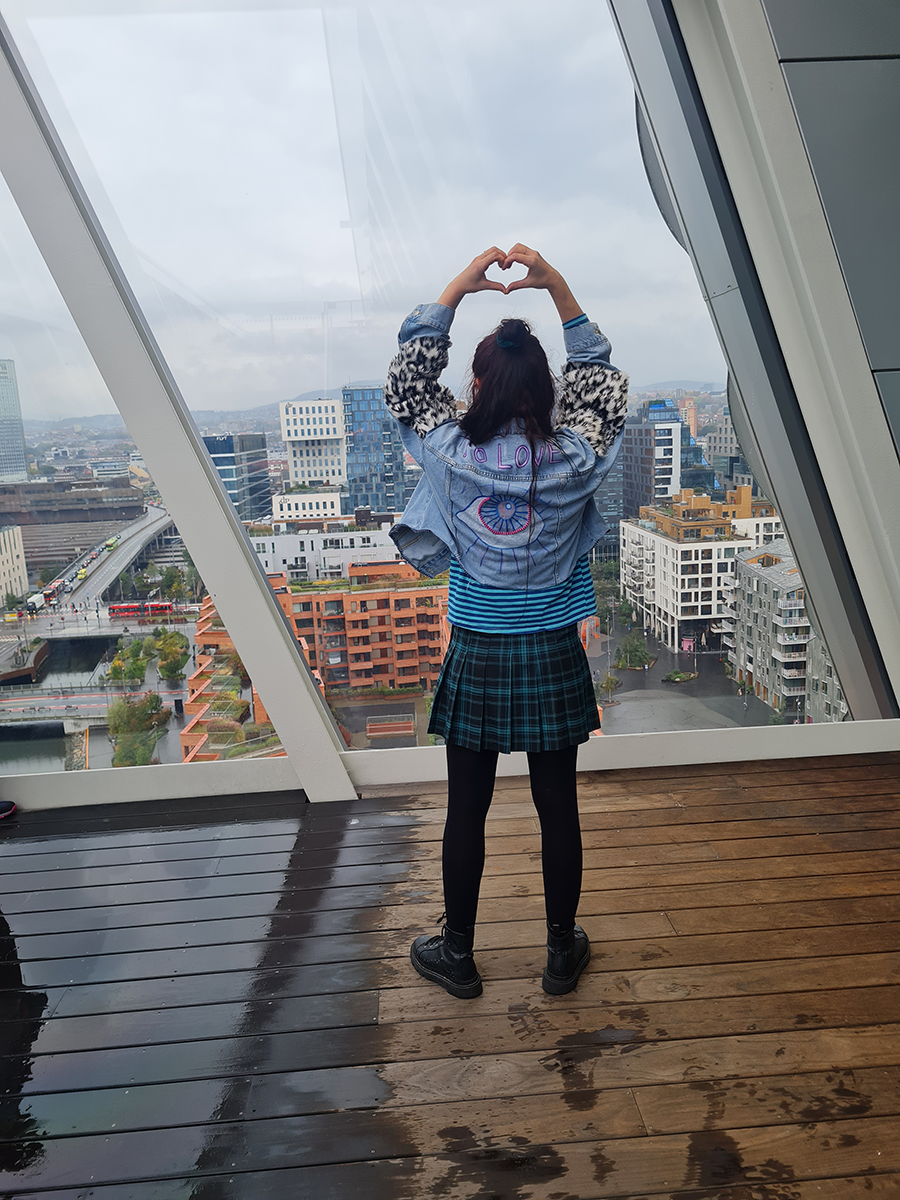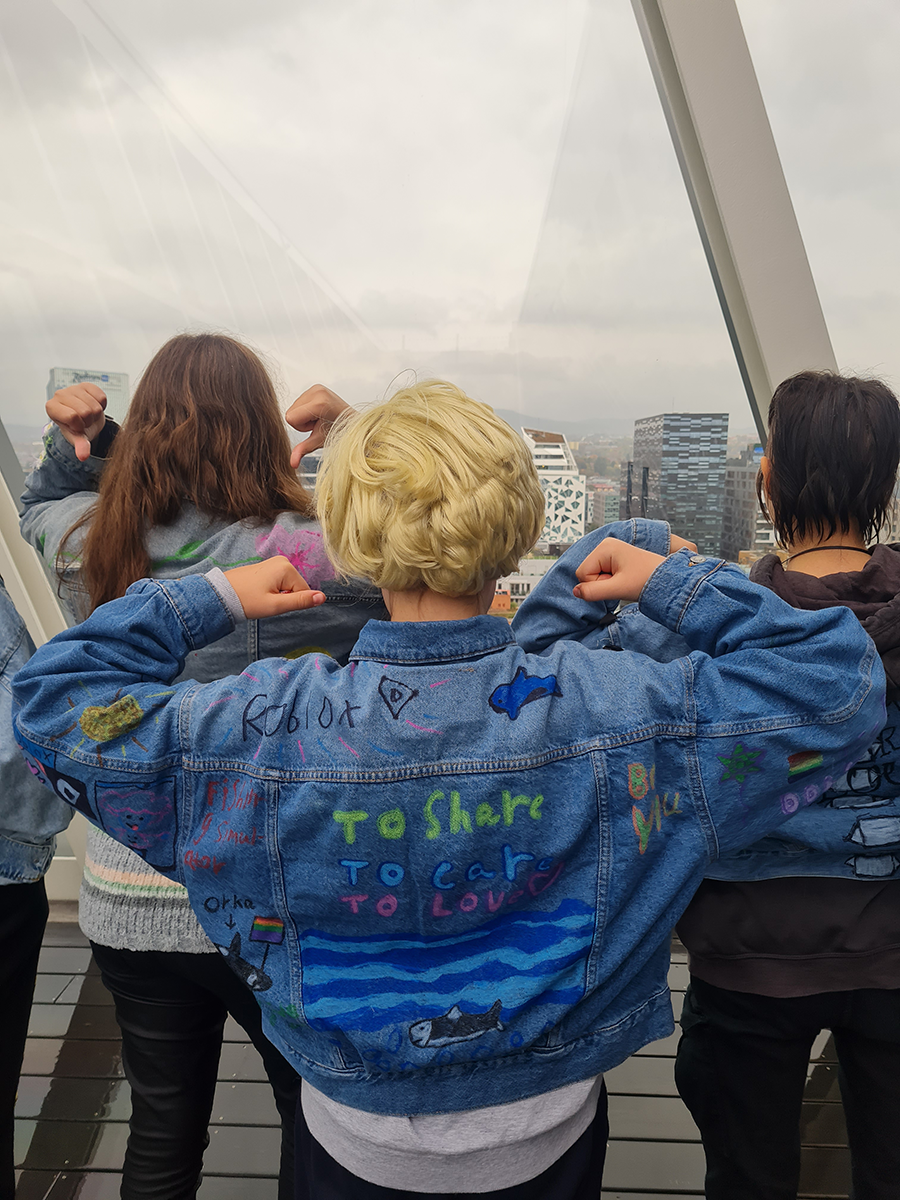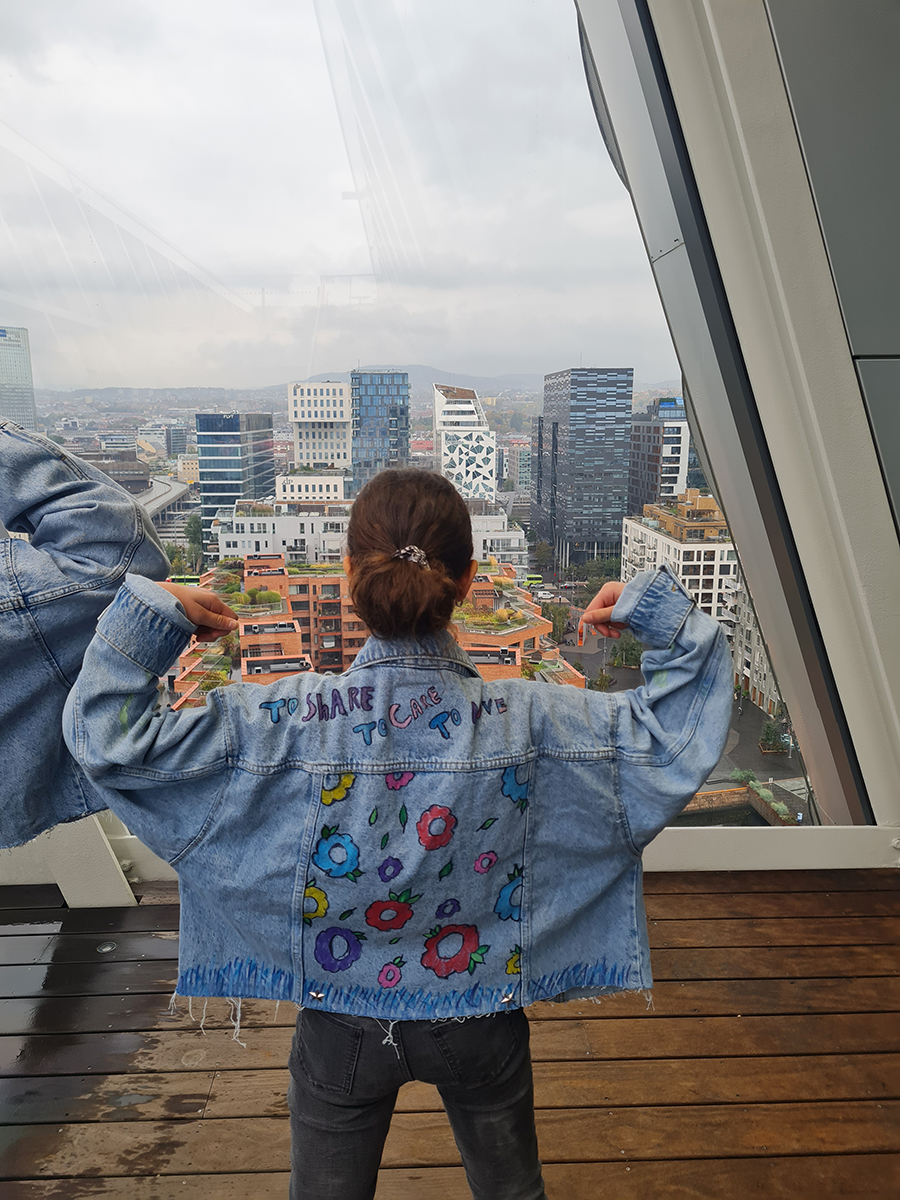What does it mean to turn an educational space into a site of experimentation, care, and shared responsibility? The collective Walk of Shame invite us behind the scenes of their guest-curated autumn semester for Mobilizing Citizenship 2022, where education was reimagined as a space for embodied learning and mutual support. Through a series of collaborative workshops, they explored how caring and sharing can move beyond abstract ideals to become lived, daily practices. In this reflective overview, Walk of Shame share their approach to crafting environments that nurture agency, spark dialogue, and foster collective creativity.
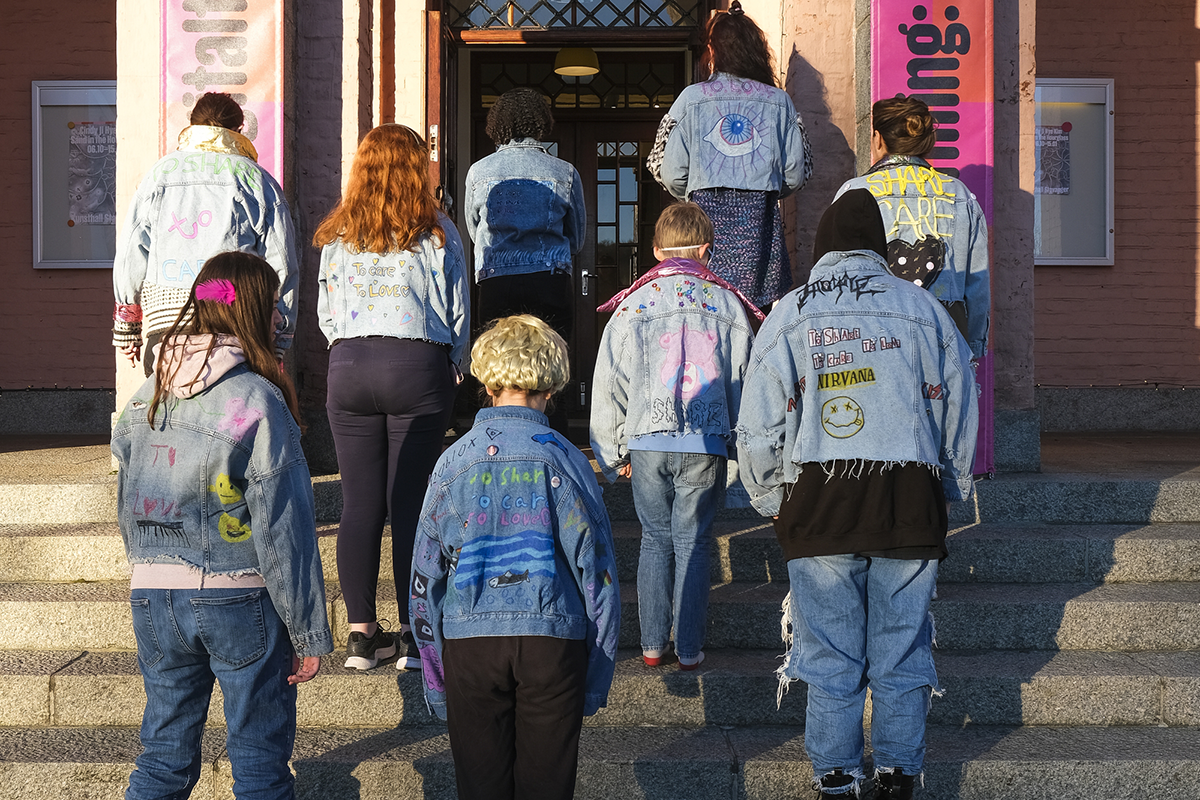
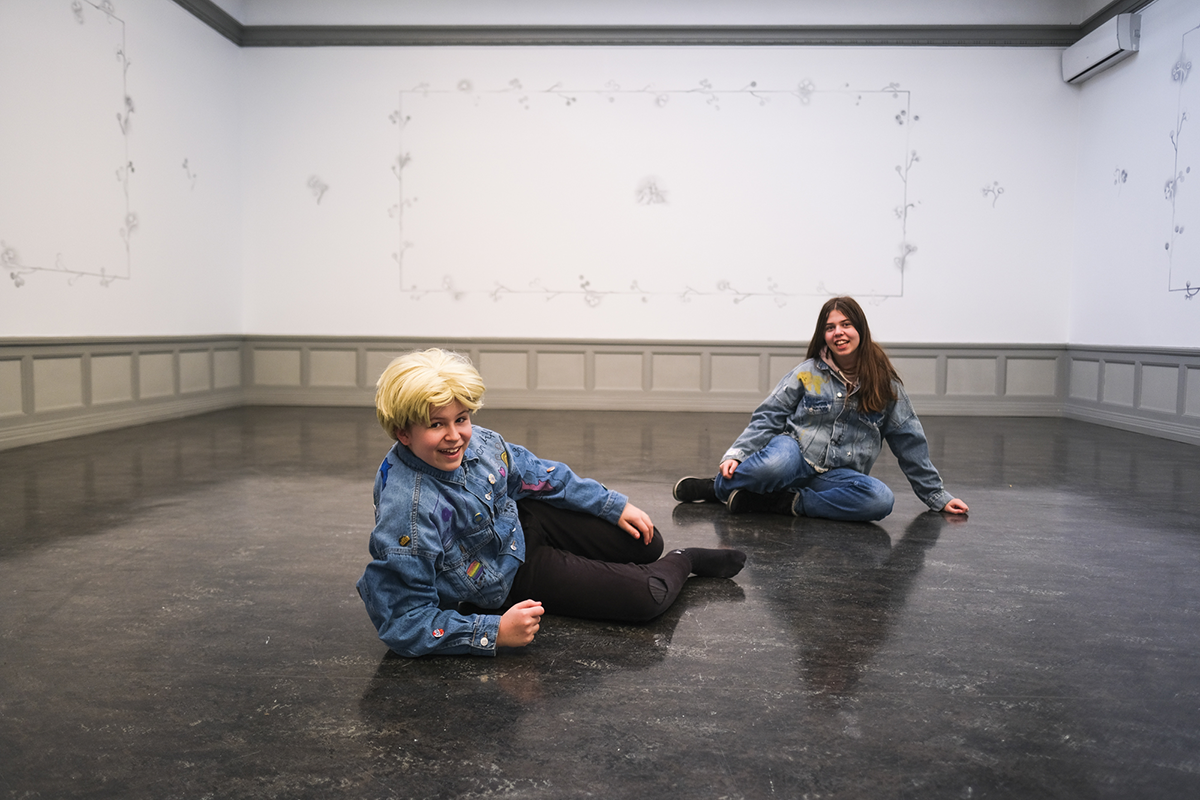

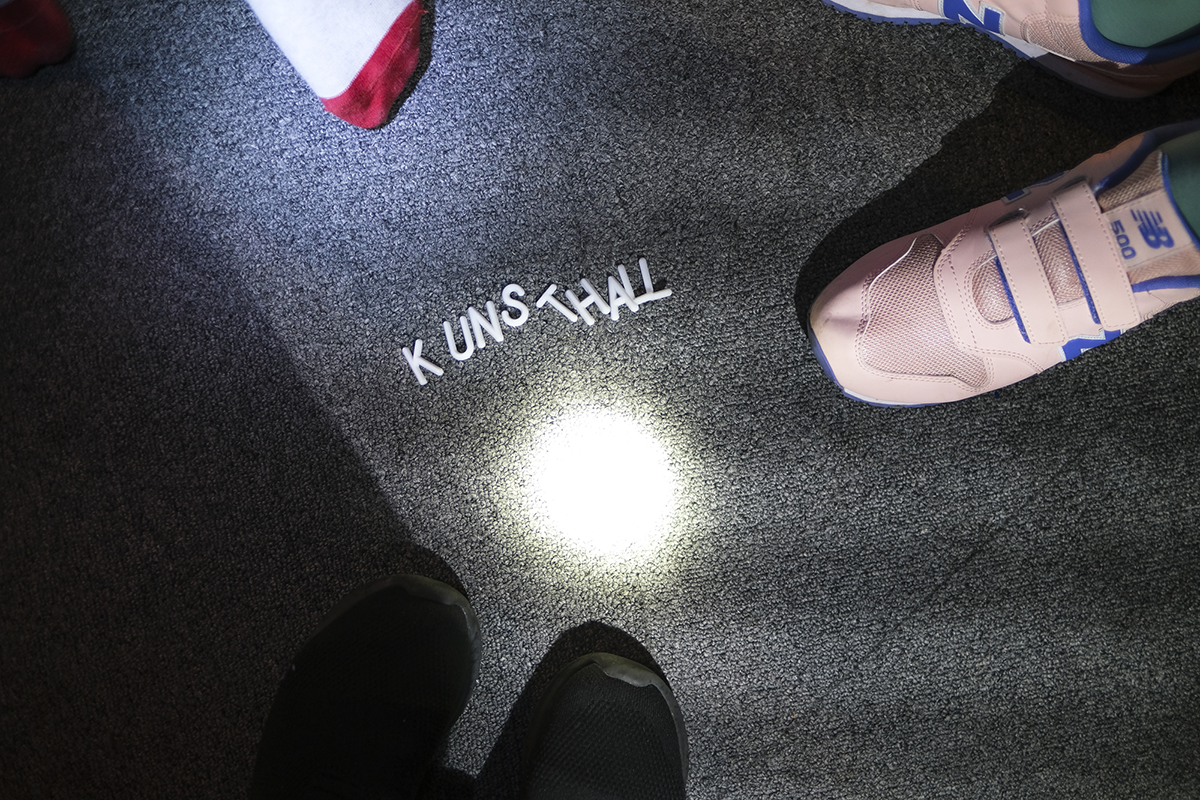
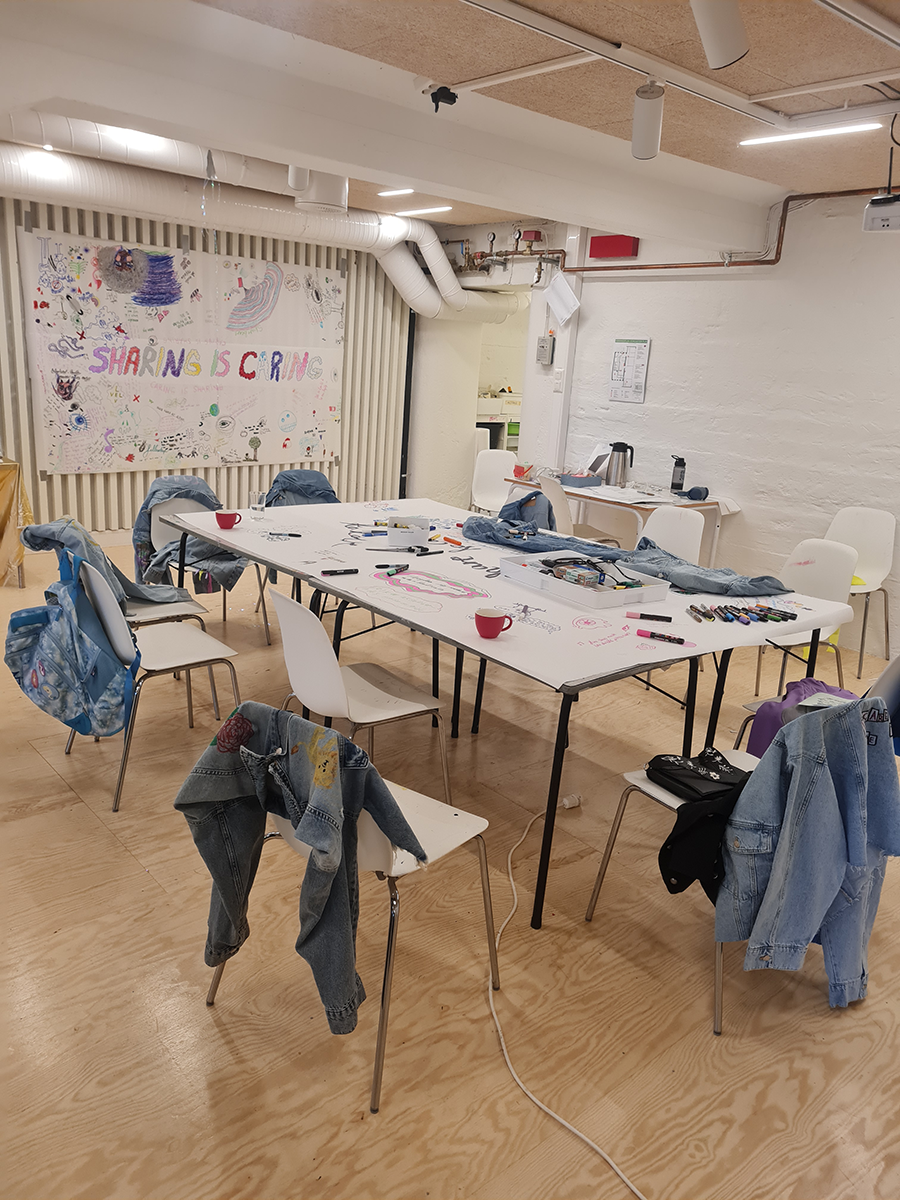
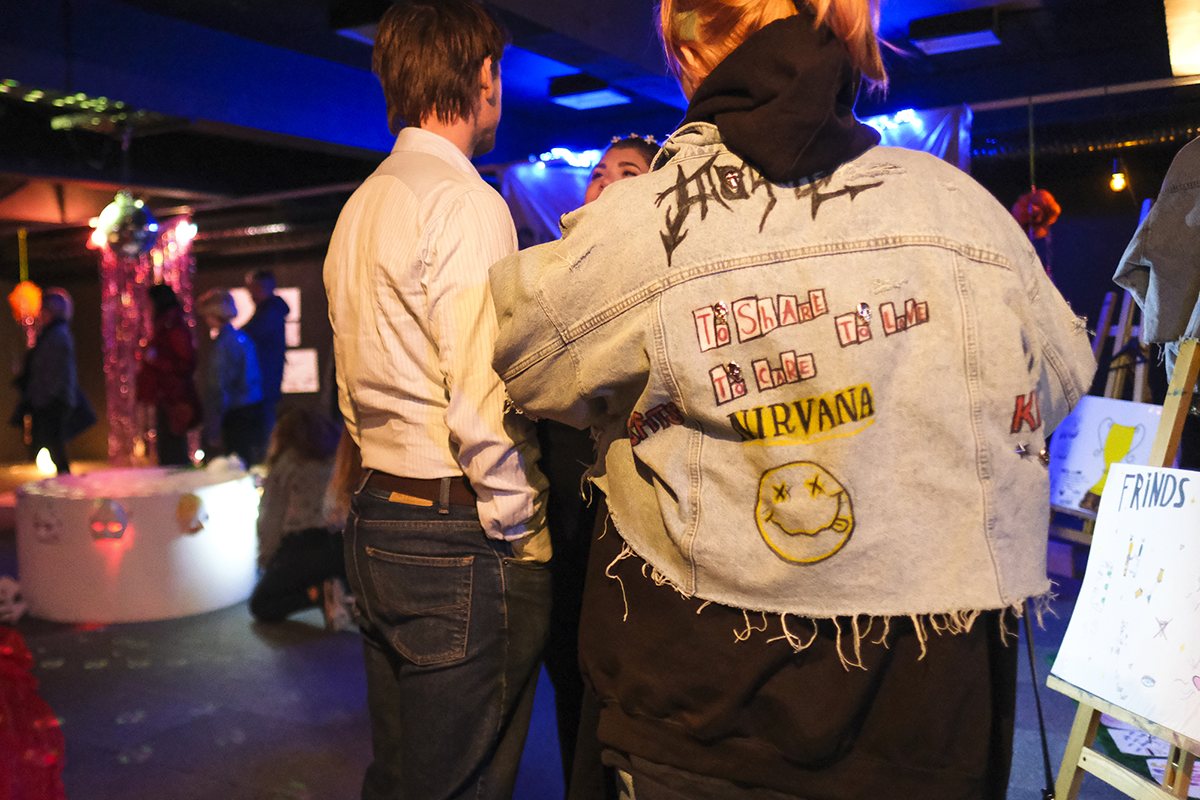
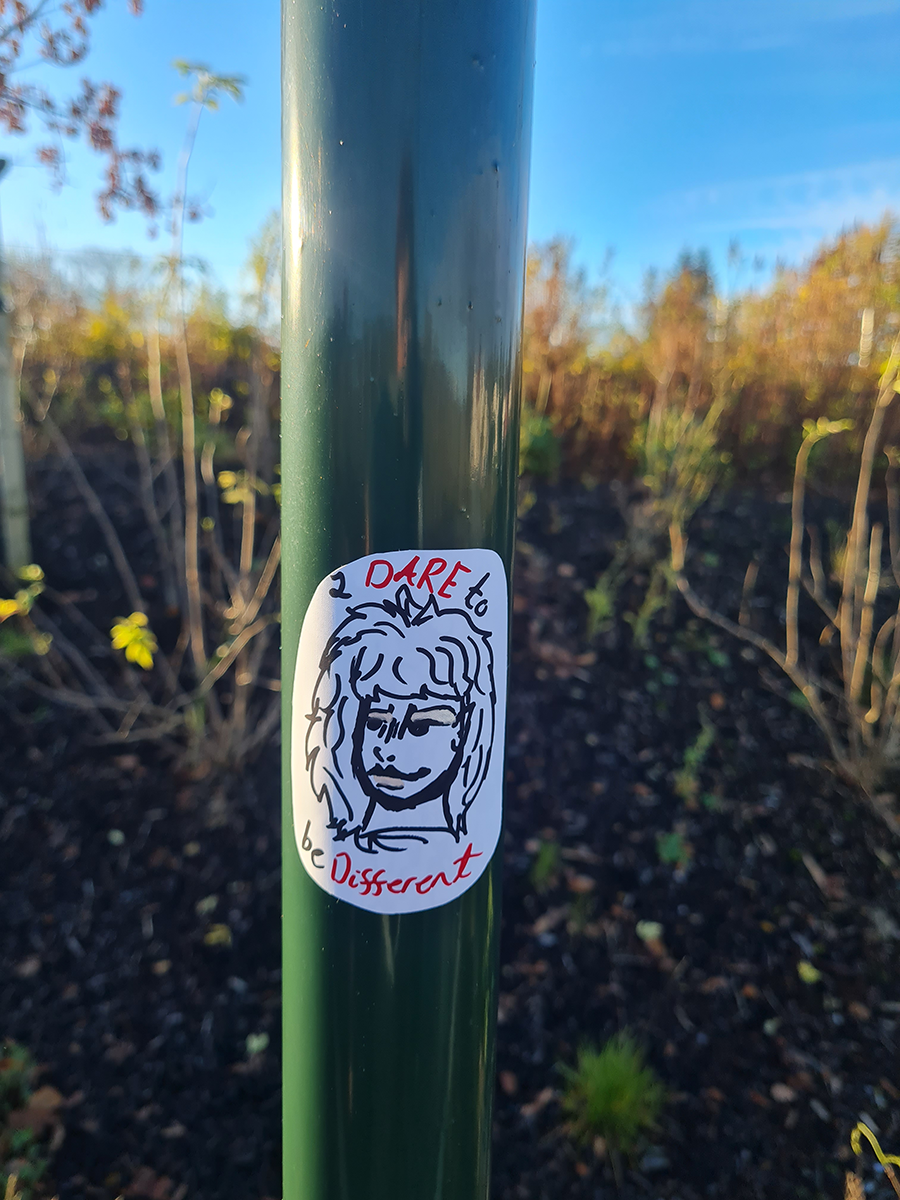
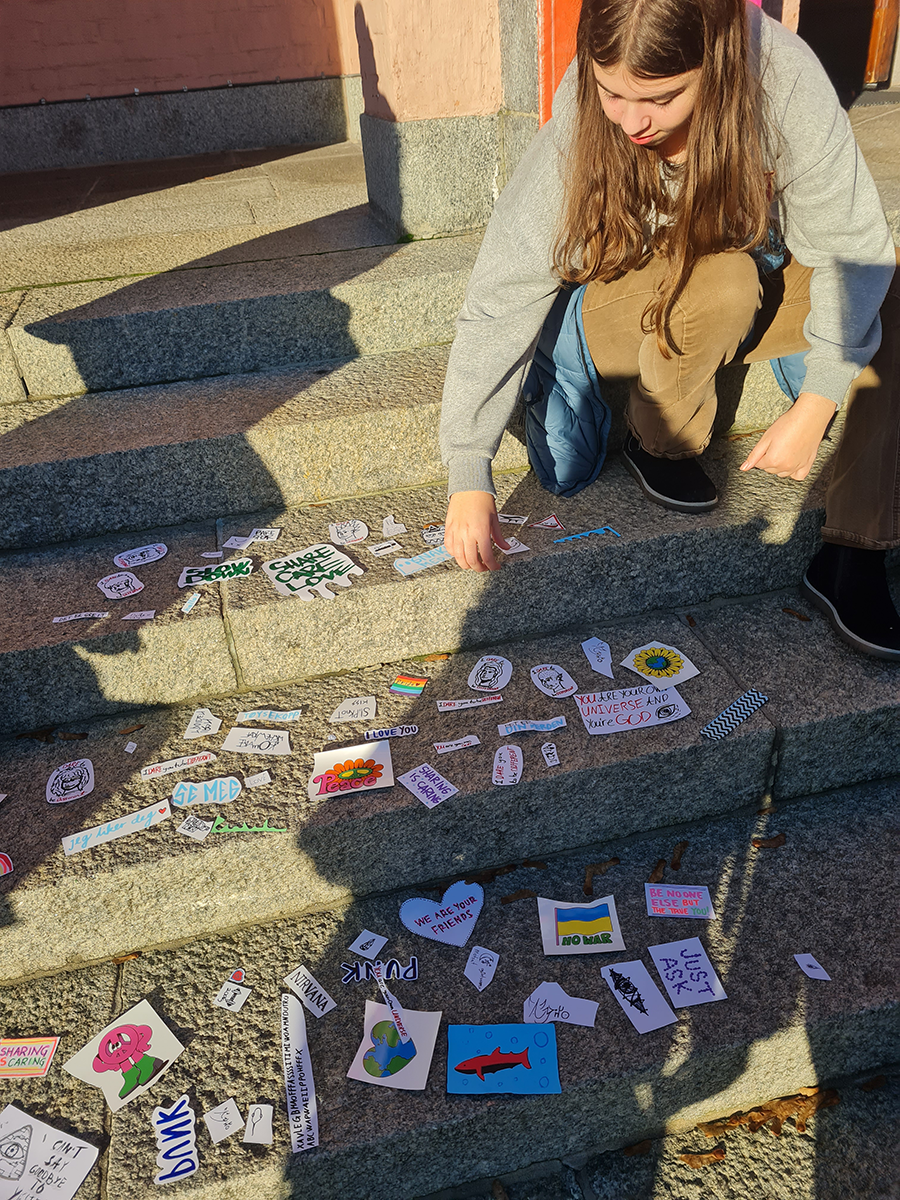
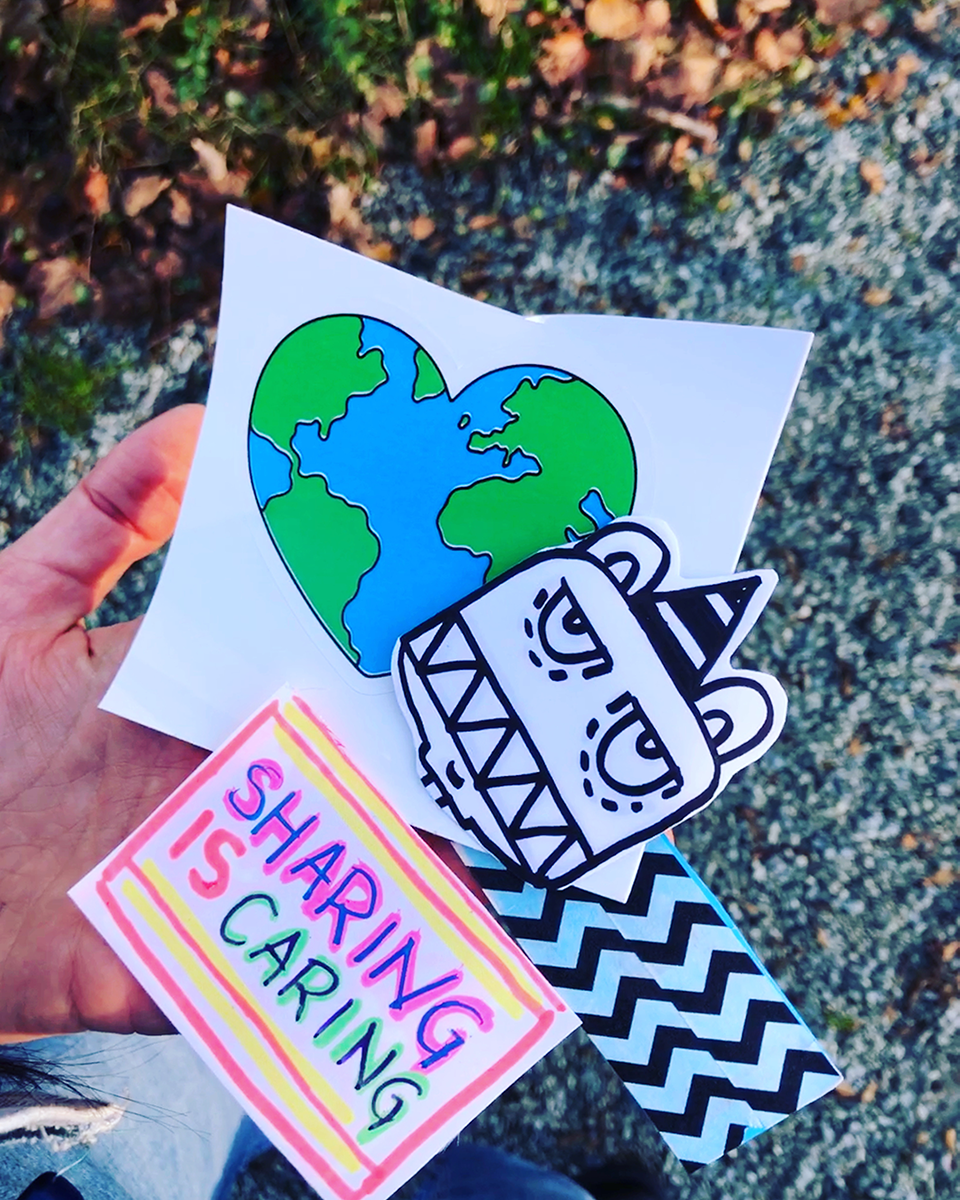
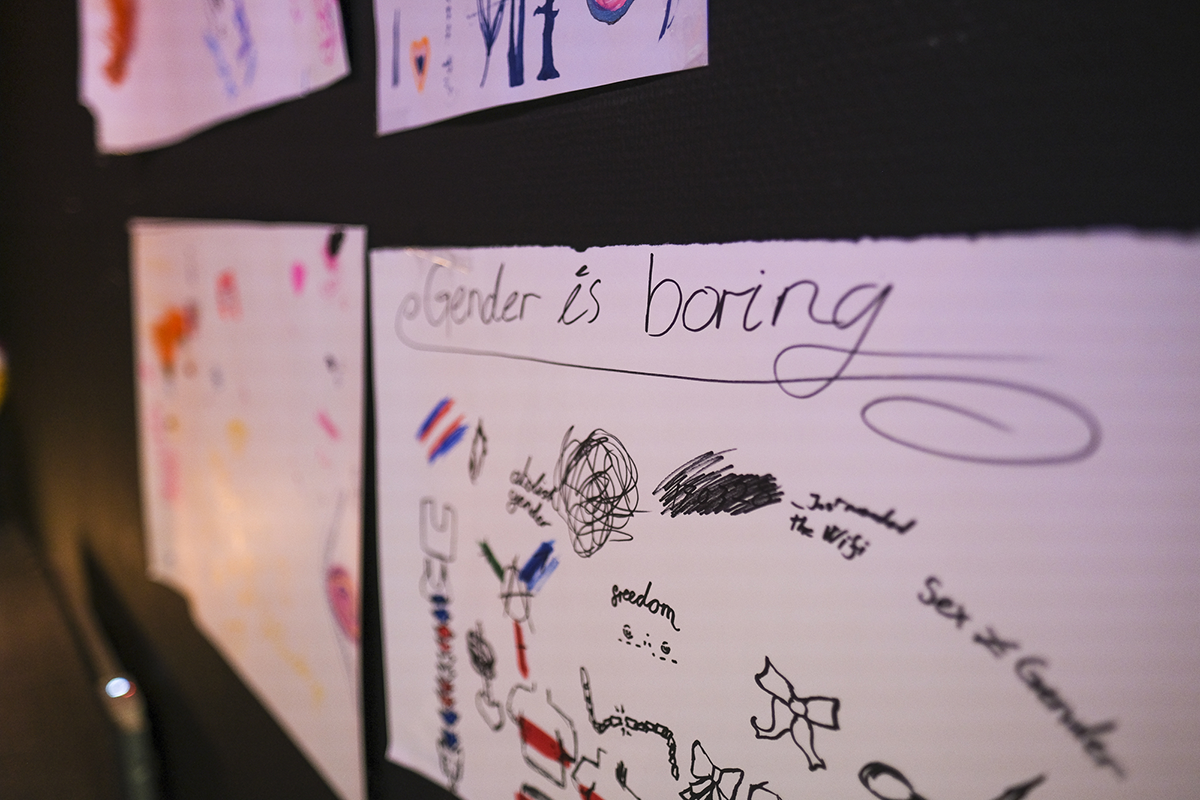
Walk of Shame (WOS) are a Bergen-based artist collective that have, since 2012, explored the unruly beauty of co-creation through performance, installation, and participatory art. At the heart of our practice lies a fascination with shared authorship, agency, and the creative potential that emerges when control is deliberately relinquished. Our work often unfolds within fictional frameworks that invite collaborators—especially young participants—into immersive acts of making, imagining, and becoming.
Rather than steering toward fixed outcomes, we cultivate what we call positive chaos: a fluid terrain where leadership shifts, care circulates, and expression takes unexpected forms. It is within this instability that we find fertile ground for relational learning and the blurring of boundaries between the artistic and the social.
When we were invited to join the Mobilizing Citizenship project, our intention was to set the conditions for collective experimentation. Drawing on participatory and relational art practices, we approached care and sharing as intimate, embodied gestures. We knew from experience that in these processes, it is often the journey—not the end result—that carries the deepest resonance. Here, we take you into how we worked to create a setting where young voices could surface, collide, and converge—giving rise to new expressions of identity, presence, and protest.
Rather than steering toward fixed outcomes, we cultivate what we call positive chaos: a fluid terrain where leadership shifts, care circulates, and expression takes unexpected forms. It is within this instability that we find fertile ground for relational learning and the blurring of boundaries between the artistic and the social.
Walk of Shame participated in MC twice. First with a workshop in the spring of 2019 under the semester theme of Movement and Body Representation. In the summer of 2020 Walk of Shame were invited to hold workshops as part of Kunsthall Stavanger summer school Klikk Her-TV. They later guest-curated the MC autumn semester of 2022, consisting of four workshops; one of them was held at the Munch Museum in Oslo. This text looks more closely at the autumn semester of 2022.
How It Began: Setting the Stage and Creating a Foundation for Openness
From the very first session with the participants in the beginning of autumn 2022, we focused on building a safer space, not through declarations, but through atmosphere.
The central theme we worked with was ‘Sharing is caring // Caring is sharing’. This was more than a slogan, it shaped the entire space.
We welcomed participants aged 12 to 16 with music, snacks, and soft lighting. A small fictional campfire had been set up in the middle of the room, creating a warm and intimate focus point. Around it, we placed conversational objects, including a model of a human cell and one of an animal cell. Together, we compared them. This sparked unexpected questions: What makes us human? How do humans and animals share? Can you share something without words?
From here we asked all participants to choose a name for the day and to make their own hand-drawn name tags. While seated together in a circle on the floor, we undertook activities such as drawing games, sharing music, and telling short, funny, or awkward stories. These low-threshold rituals became the foundation for openness.
In the centre of our circle, we placed a large sheet of paper with the phrase “SHARING IS CARING” written boldly across it. We asked: What does this mean to me? To us? Participants responded by adding small drawings, short texts, and symbols, turning personal reflections into something visible.
After some time, we rotated seats around the circle. Each participant now sat in front of someone else’s contribution and was invited to build on it. They could respond, extend, or question what was already there. This silent, thoughtful exchange turned into a collective artwork, layered with meaning. In a way, everyone had thought someone else’s thoughts and had to engage with them. The space between us had changed. We were no longer just individuals. We had become a shared ‘we’.
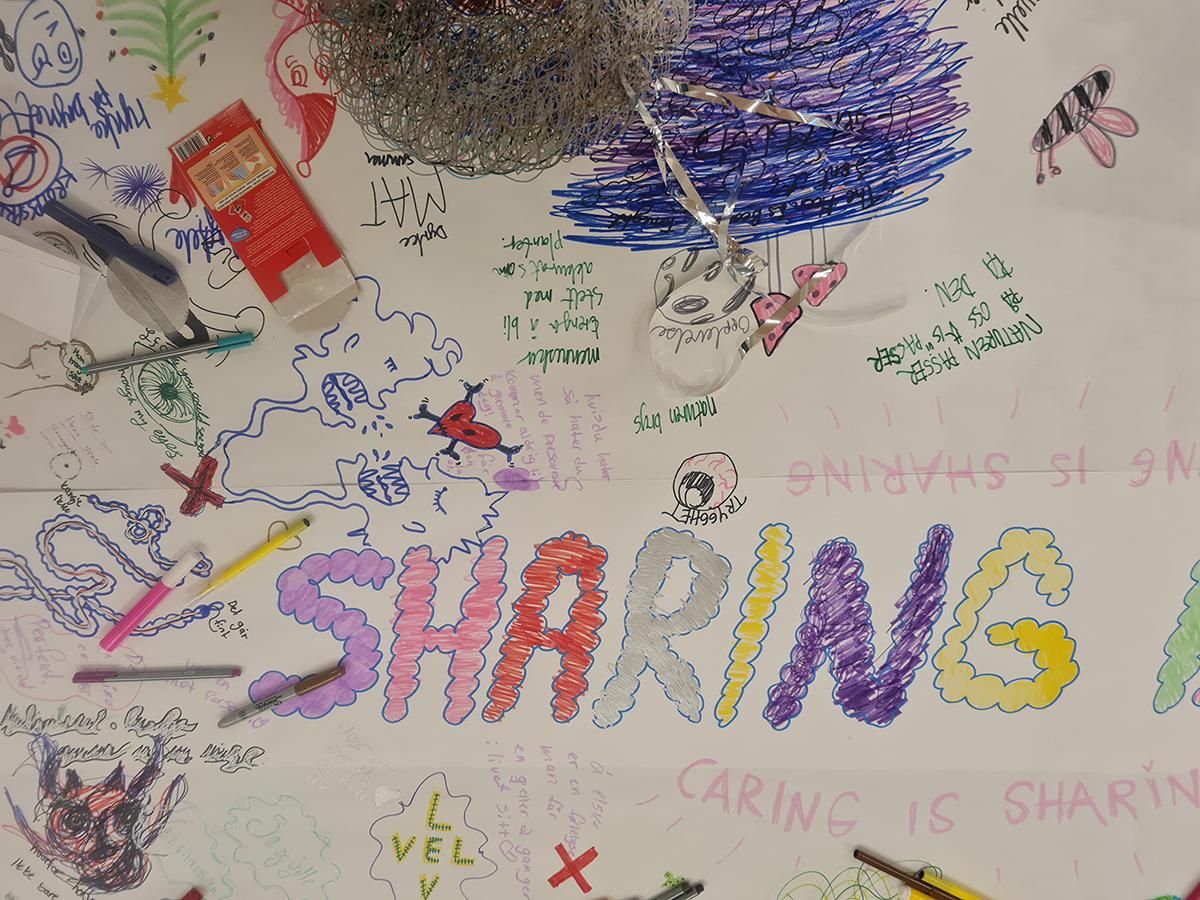
Becoming Part of Something Bigger, Across Time
As the workshops unfolded, a new chapter opened. A woman from the 1950s entered the room, transported through time, or so it seemed. One of us from Walk of Shame had taken on the role of a character from another era. She wasn’t humorous, but rather magical and quiet. In a soft, measured voice, she spoke of wonder and memory—how people shared when she was young.
She described emotions exchanged through handwritten letters, food, and stories offered without screens, and the presence of silence as something meaningful, even weighty. The participants were invited to ask her anything, and they did:
‘Did people talk about feelings in the ’50s?’
‘How did you protest if something felt unfair?’
‘What was friendship like before phones?’
Her answers were poetic, sometimes strange, and always rich with detail. And with her presence, the room shifted. Time folded in on itself. The group began comparing their own ways of sharing with something imagined, yet emotionally real. The fictional frame made it easier to ask deeper questions. How has sharing changed? What do we miss? What do we carry forward? This fictional frame allowed for reflection without judgement. It created an opening for empathy across generations, technologies, and lived experience.
Slowly, through drawing, storytelling, shared music, and intentional silences, we built a sense of community. Trust emerged through a quiet, steady invitation: to slow down, to listen, and to become part of something bigger—together.
This process allowed participants to change pace and leave behind the roles they might carry at school or home. They entered a different kind of space, one that didn’t ask them to perform, but to be present. Slowly, through drawing, storytelling, shared music, and intentional silences, we built a sense of community. Trust emerged through a quiet, steady invitation: to slow down, to listen, and to become part of something bigger—together.
Making Identity Visible: Jackets, Patches, and Secrets
Across the four-part workshop series, each participant received a denim jacket to personalise—an invitation to make identity visible, tactile, and wearable. Inspired by subcultural movements such as the punk and goth scene, participants designed logos, invented characters, and imagined what those characters would stand for. One of the key activities, ‘Button Secrets’, invited everyone to anonymously write a small secret, draw someone else’s at random, and transform it into a button. Other collaborative exercises included a group mega-drawing and adding elements from each other’s jackets, creating an evolving visual conversation between participants.
Over time, the jackets transformed into wearable statements of presence and protest. Secrets became buttons, fears became patches, and imagined characters found real voices. Through material play and personal storytelling, the group co-created meaning through what they made, and through the attention and care they offered each other. One participant painted a symbol of care that was later mirrored by others. Another wrote, ‘I’m scared too’, not as a confession, but as an invitation.
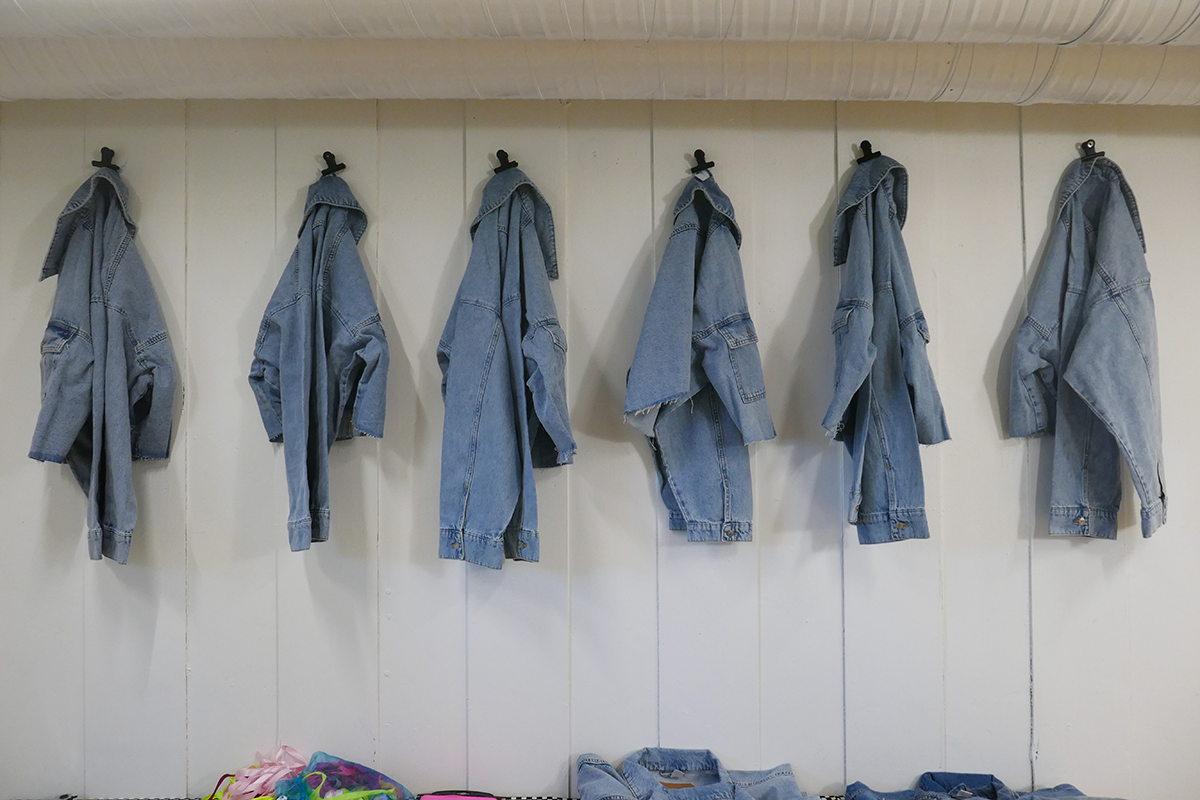
Expanding the Space: From Inside to Outside
After building a strong group dynamic, we began preparing to move into public space—an intentional and essential part of the process. In a dimly lit room, we lay on the floor with eyes closed, music playing. Participants were invited to revisit what they had made, seen, and felt. Then, gathered in a circle, we asked: What surprised you? What would you want others to know about us?
From this space of reflection, we transitioned into a silent walk through the city, a subtle and poetic demonstration. Participants wore their personalised jackets, face paint, and masks. They carried handmade stickers featuring their own messages: small but powerful signs that were placed in public space. Some were stuck to walls and lampposts, with messages like:
‘You are not alone.’
‘I’m listening.’
‘You don’t need to be perfect to matter.’
These were messages to the world—but also gestures of care and connection. The group claimed public space through intention, by taking up space together with care.
We encouraged participants to reimagine public space as a place of possibility. The silent walk became a collective act of embodied presence, where each person claimed visibility on their own terms: quietly, creatively, and with courage.
Institutional Echoes: Between Stavanger and Oslo
Our workshops unfolded in two places: Kunsthall Stavanger and the Munch Museum in Oslo. The shift between the two locations was revealing. In Stavanger, the young participants felt at ease. They laughed, debated, and claimed space with confidence. In Oslo, the tone changed. Voices lowered and their movements became tentative. One participant asked quietly: ‘Are we allowed to be here?’
We hadn’t planned for this shift, but we felt it. It served as a powerful reminder that space is never neutral. Institutions carry expectations—both spoken and unspoken—that shape how we behave and who feels entitled to speak.
And yet, the participants embraced the moment. Their gestures, though subtle, were intentional: a patch with five symbols of care; a button echoing someone else’s voice; a costume that allowed them to become someone else for an afternoon. Through these small acts they performed visibility, solidarity, and agency.
Final Circle: Co-curation and Reflection
At the end of the series, we returned to the circle. Jackets, drawings, stickers, and memories were laid out before us. We asked: What stayed with you? What did you learn from someone else?
Participants were invited to curate a final exhibition based not on what looked best, but on what mattered most to them. The result was anything but a polished display of outcomes. Instead it became a gathering of lived processes. Visitors encountered objects, but also traces of conversations, care, and collective authorship. It stood as a living archive of what had been shared—a soft protest against the idea that young voices must be polished to be worthy of attention.
Before our reflection, we read a short excerpt from a report on Norwegian freedom of speech. We read it together and it served as a spark for conversation: What does freedom of expression mean to you? Do you feel free to speak—at school, at home, in public?
The answers were thoughtful, sometimes hesitant, but always rooted in lived experience. Reading the report together added gravity to the conversation. It became clear that freedom is not only about legal rights, it is also about space, trust, and being recognised.
What We Learned About Art, Voice, and Space
In a world where young voices are often drowned out by the noise of everyday life, creating statements on jackets, buttons, and stickers became an effective way to make ourselves seen and heard. By wearing our beliefs and opinions on our sleeves—literally—we were making a statement about who we are and what we stand for. These acts were personal and invited connections with other people who shared our values. They created openings to meet people who shared our values, as well as those with different perspectives.
In a world where young voices are often drowned out by the noise of everyday life, creating statements on jackets, buttons, and stickers became an effective way to make ourselves seen and heard.
Wearing someone else’s words or symbols became an act of solidarity, amplifying voices beyond our own. In doing so, we formed small, intentional communities rooted in shared interest, mutual curiosity and care. These were not echo chambers, but spaces of exchange, where learning about each other mattered.
Through the workshops, we witnessed how a creative process can offer young people space to be heard—without pressure to perform or conform. Small gestures—choosing a name, drawing a fear, wearing a secret—sparked profound connections. We experienced how public space can be transformed through quiet presence, and how institutions influence who feels entitled to take up space.
Most of all, we reaffirmed our belief that art is not something to observe from a distance. It is something we do together. It can be activism. It can be a language for expressing the personal and political. It can be a language for making room for difference, for care, and for voice.
Most of all, we reaffirmed our belief that art is not something to observe from a distance. It is something we do together. It can be activism. It can be a language for expressing the personal and political. It can be a language for making room for difference, for care, and for voice.
As one participant put it:
‘Here, I can breathe differently.’
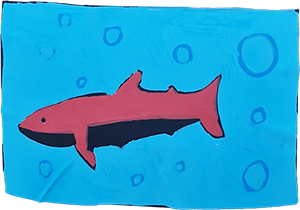
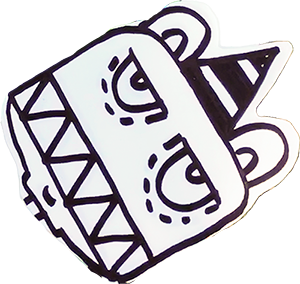
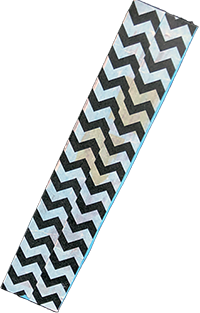

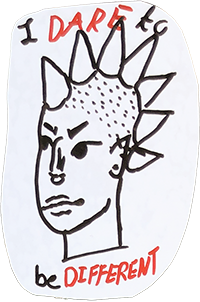
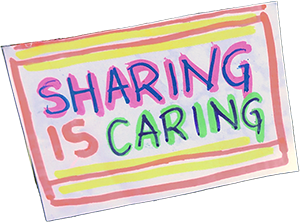
Tools for Shared Expression in Contempotary Art Spaces
A hands-on guide for participatory engagement with young audiences
These tools are designed for educators and artists working in contemporary art who aim to create inclusive, imaginative, and co-owned experiences with young people.
Developed by artist collective Walk of Shame as part of the project Mobilizing Citizenship, this guide can be adapted to a wide range of themes, spaces, and age groups.
1. Set the Tone: Build Trust Through Atmosphere
Why it matters:
A sense of safety, openness, and curiosity is foundational for participation. You’re not just running a workshop—you’re creating a temporary community.
How to do it:
- Welcome with presence: Greet participants with music, snacks, and warm lighting.
- Stage a fictional campfire: Use soft light to simulate a fire at the centre of the space. Around it, place conversation objects—for example, a model of a human cell and an animal cell.
- Start with metaphor: Invite the group to compare the two cells. Ask: What makes us human? What do animals and humans have in common? How do we share—with words, without words?
- Sit in a circle: Remove hierarchy and promote eye contact and shared focus.
- Choose a name for the day: Let each participant invent or choose a new name and make their own name tag.
- Begin gently: Ease into the session with drawing games, shared storytelling, or laughter to build ease.
- Introduce a thematic anchor: Write a central phrase (e.g., ‘Sharing is Caring // Caring is Sharing’) in bold letters on a large paper in the centre. Ask: What does this mean to me? To us? Let participants respond through drawing, doodles, or text. Then, rotate seats so everyone continues someone else’s thought—building a collective visual dialogue.
TIP: Use this opening moment to build a shared sense of curiosity, vulnerability, and belonging.
2. Material-Based Expression: Make Identity Visible
Why it matters:
Materials can express complexity, emotion, and identity in ways that words often can’t. They become tools for discovery, communication, and care.
How to do it:
- Offer wearable canvases: Give participants denim jackets, sashes, masks, or other items they can personalise.
- Introduce symbolic exercises: Try activities such as:
‘Button Secrets’ (write a secret, then turn someone else’s into a drawing)
‘Fear Patches’
‘Care Badges’ - Encourage layering and remixing: Encourage participants to borrow from each other’s designs, fostering a sense of mutual authorship and recognition.
- Co-create: Use a giant paper roll or mural for a group ‘mega-drawing’.
TIP: Don’t focus on aesthetic ‘results.’ Embrace work that is messy, poetic, unfinished—and meaningful.
3. Storyplay & Time Travel: Activating Historical Imagination
Why it matters:
Fictional characters and historical play let participants explore contrasts, question norms, and imagine alternative ways of being.
How to do it:
- Bring in a character: A facilitator embodies a character from the 1950s, sharing an exaggerated and funny story about how sharing worked ‘back then’.Open the floor: Participants are invited to ask anything: What was school like? How did people express feelings? How did you protest without social media?
- Reflect together: Transition into a group discussion about what has changed and what hasn’t: How do we share today? What’s easier now? What’s more difficult?
TIP: The combination of humour, roleplay, and dialogue fosters empathy and encourages critical comparison.
4. From Text to Talk: Using Documents as Fuel for Dialogue
Why it matters:
Reports, laws, and public texts can feel distant—but they deeply affect our lives. Activating them through conversation makes abstract ideas personal and relevant.
How to do it:
- Choose a brief, accessible text: For example, a section from a report on freedom of speech in Norway.
- Read together: Slowly, aloud, in pairs, or as a whole group.
- Ask open questions: What surprised you? What do you agree or disagree with? Do you feel free to speak? Where, and with whom?
- Connect to lived experience: What would you say if you knew someone was really listening? What needs to be said more often—or in new ways?
TIP: Follow the energy in the room. If a phrase sparks emotion, stay with it. Let participants guide the conversation.
5. Claiming Public Space Together
Why it matters:
Moving from a ‘safer’ space into the public realm transforms the work into a visible, collective statement of presence, care, and community.
How to do it:
- Ground the group: Begin by lying on the floor in silence with music playing. Invite participants to revisit what they have made and shared.
- Prepare for visibility: Wear jackets, masks, or objects created in previous sessions.
- Take to the streets: Do a slow, silent walk through the city. Use sticker activism: Let participants design and place homemade stickers in the public space with personal messages.
TIP: Frame the public action as gentle but radical. Visibility doesn’t need to be loud—it can be deliberate, poetic, and collective.
6. Co-Curate & Reflect
Why it matters:
Reflecting together helps solidify learning, shift ownership, and celebrate not just what was made, but how it was made.
How to do it:
- Circle up one last time: Lay out all materials—jackets, drawings, stickers, thoughts.
- Reflect on the process: What stayed with you? What did you learn from someone else?
- Build the exhibition together: Decide what to show, and how. Include unfinished work, dialogue snippets, and moments of care—not just final objects.
TIP: Let participants take the lead. A co-curated exhibition builds confidence, pride, and a deeper sense of engagement.
7. Principles to Carry with You
- Be a host, not a leader. Make space. Share power.
Process over product. Let the work unfold at its own pace—don’t rush it. - Start in the body. Allow movement and material to lead before words take over.
- Listen for the quiet. Expression comes in many forms, not all of them loud.
- Treat art as a method. For empathy, protest, imagination, and connection.
Suggested Materials to Have on Hand
- Paper rolls, markers, stickers, post-its
- Wearables: wigs, jackets, hats, sashes, etc.
- Button maker
- Facepaint, fake lashes, coloured contact lenses
- Safety pins, fabric markers, glue, scissors
- Voice recorders or phones (with participants’ consent)
- Music and portable speakers
- Simple props or costumes for roleplay
- Models (e.g., animal and human cells)
- Printed text excerpts (e.g., from freedom of speech reports)
- Snacks and cushions or rugs for a comfortable floor setup
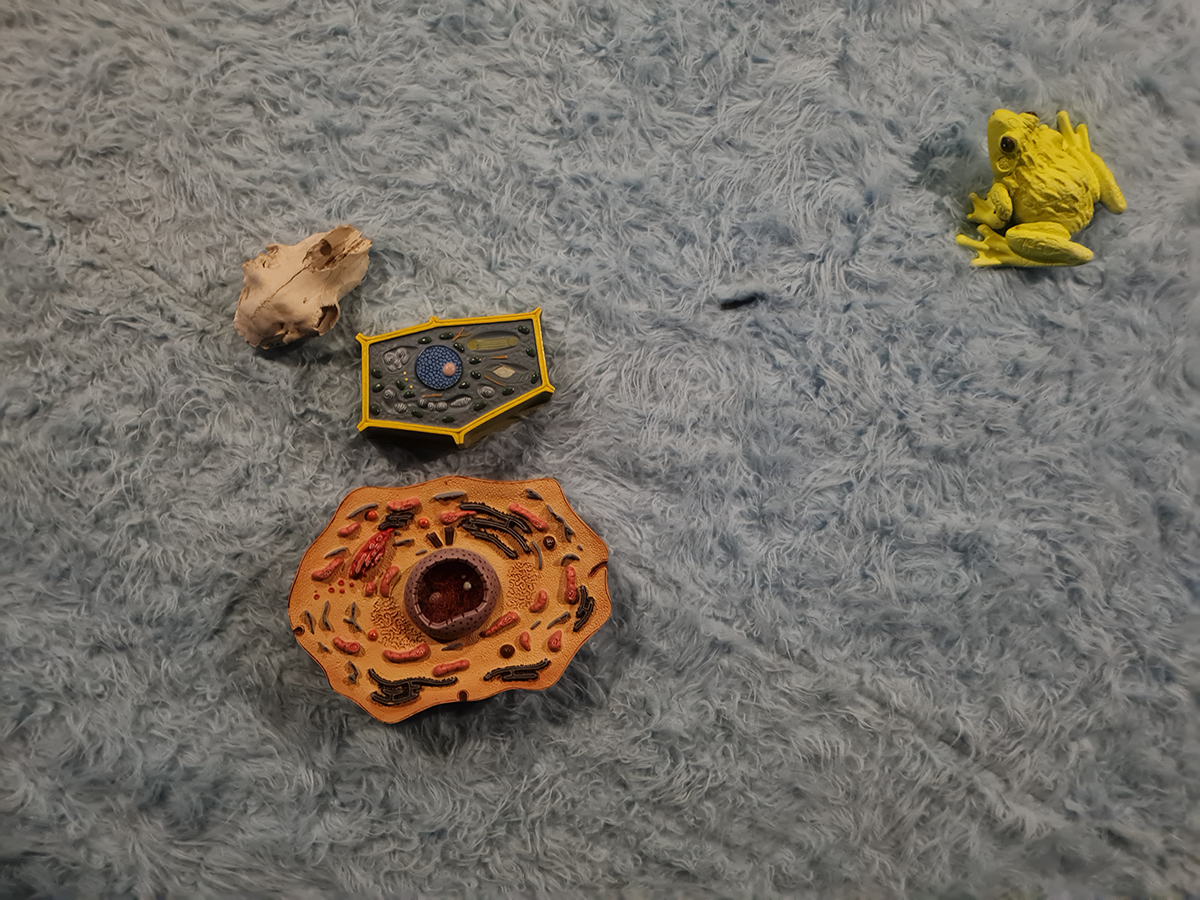
This guide was developed from Walk of Shame’s participatory workshop series in the project Mobilizing Citizenship. It offers strategies for transforming contemporary art spaces into zones of shared expression, radical empathy, and creative civic engagement.
